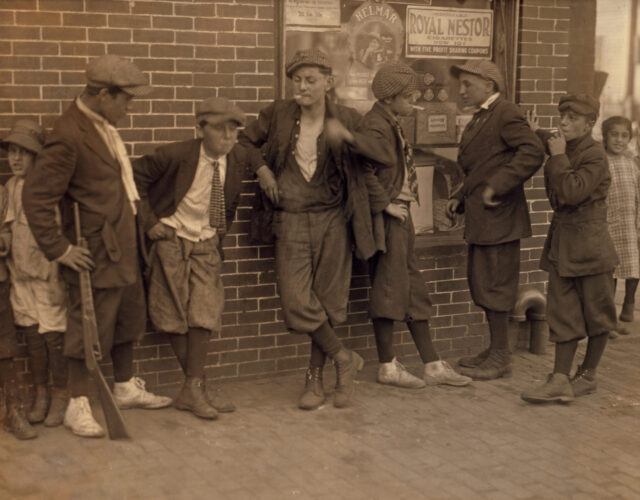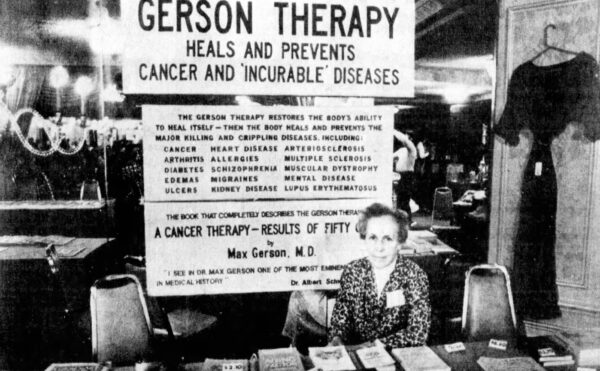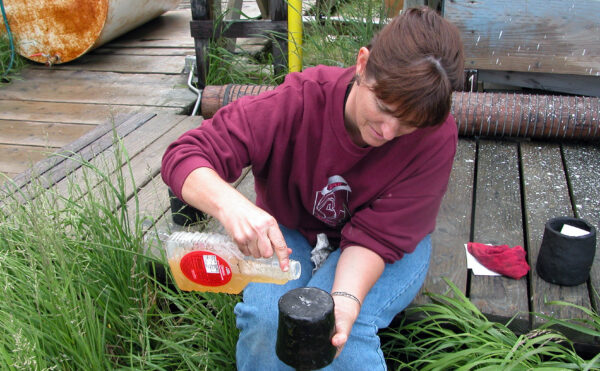Science was once seen as a powerful tool to turn kids away from delinquency. Picture Marlon Brando’s character from The Wild One not on a flashy motorcycle but in front of a deluxe chemistry set. In the iconic scene where Brando is asked, “What are you rebelling against?” he could look up from his alcohol lamp and test tubes to drawl, “The known properties of matter!”
Okay, so it’s not exactly cinema gold. But the connection between youthful rebellion and chemistry sets isn’t as shaky as you may think.
“The Hobby of Today . . . Leads to the Opportunity of Tomorrow!” Promises like these were ubiquitous on the lids of chemistry sets and other “educational” toys produced in the first half of the 20th century. But for educators in the 1920s and 1930s, studying science wasn’t only about starry-eyed hopes and dreams for tomorrow. It was also meant to address urgent anxieties of the time.
Child labor laws and social reforms of the late 19th and early 20th centuries changed the lives of many children from working families. As children stepped off the factory floor, school enrollments swelled. Roughly half of American children were enrolled in elementary or high schools by 1900, but by the late 1920s that number had risen to nearly three-quarters. Overall, children of the early 20th century remained in school longer than their parents’ generation, a fact that helped give rise to a new view of adolescence as a distinct life stage—rather than simply a brief audition for adulthood. Parallel to this growth in education came the emergence of a new “youth culture” that left many adults anxious. Yesterday’s entertainments, like communal street games, were slowly declining as urban streets grew increasingly clogged with car traffic. New, fashionable spaces for after-school socialization—including inexpensive movie theaters, arcades, and amusement parks—were places where boys and girls mingled unsupervised across social and class lines. The rowdy pleasures of these crowded entertainments were thought to be dangerous to kids’ moral development. A 1926 article in the political and cultural magazine Forum asked, “Has Youth Deteriorated?” Modern youth, the author claimed, “rush in an impetuous, juvenile stampede. . . . They have hurled aside all conventions.”
There’s little evidence to suggest that juvenile delinquency was truly on the rise, but the subject gripped the public consciousness. Magazines and films played up themes of good kids gone bad—or bad kids trying to “go straight,” as in the 1924 film Grit, which starred Clara Bow as a street-gang girl with a heart of gold. The nation’s first juvenile-only court was established in Illinois in 1899; by 1925 all but two states had adopted similar programs. An emphasis on prevention and rehabilitation was believed key to dealing with youth crime. But what to do with bored, unsupervised youth? Teachers and administrators worried that once school doors closed, children were at risk of being neglected, left to wander the streets alone—or worse, at risk of joining youth gangs and so beginning a career in petty crime that would damage their chances for a successful future. Enter the after-school club.
After-school clubs got their start in 1860, when three women in Hartford, Connecticut—Mary Goodwin, Alice Goodwin, and Elizabeth Hammersley—created the Boys’ Club to provide a safe and educational space for children. Over the next 50 years similar clubs soared in popularity. Their programs often incorporated vocational training, such as woodworking or simple mechanics, along with tutoring programs. But they also appealed to kids’ desires for fun and socialization by offering basketball, baseball, and other recreation. In 1906 roughly 50 Boston-based children’s clubs formed the Federated Boys’ Clubs, an organization better known today as the Boys and Girls Clubs of America. Specialized clubs grew from general ones, and after-school clubs soon included photography, dance, music, history, poetry, and science among their subjects.
Many early science clubs focused on nature study or astronomy, but in the 1920s chemistry-oriented science clubs were viewed as a way to capture the interest of preteen and teenage boys. Chemistry clubs were championed by Morris Meister, an influential science educator who served as the founder and first principal of the Bronx High School of Science as well as the first president of Bronx Community College. While working with his students, Meister had taken note of their enthusiasm for science kits. He paid close attention to the newsletters produced by chemistry-set manufacturers, as well as their mail-order “clubs,” believing that even these informal chemistry-set clubs could curb juvenile delinquency. In his opinion teens’ competitive spirits and innate desire to gain and impress friends (what he bluntly called “gang tendencies”) could be best redirected toward chemistry, a science he considered active, hands-on, and cooperative.
Did these clubs really work? Science educators seemed to think so. In 1929, at an educational conference in Des Moines, Iowa, high-school teacher and science-club founder Louis Astell called on state leaders to support and expand early science education. He claimed that science clubs and science fairs were one of “the most effective ways of breaking up youthful gangs.” Astell would later serve as an adviser to the Junior Academies of Science, a national initiative that continues to this day. The U.S. Science Service, a national organization dedicated to sharing scientific discovery with the public, also believed in the effectiveness of after-school science clubs. In 1941 the Science Service began connecting unaffiliated clubs under the national banner of the Science Clubs of America; by 1953 it boasted 15,000 clubs and more than 300,000 members.
Not everyone benefited from the science-club boom. While girls continued to join science clubs and participate in science fairs, formal school curriculums after 1940 increasingly directed girls toward home economics and clerical skills and away from such “hard” sciences as chemistry. Likewise, for poor children in urban and rural environments, resources in science education were limited. Some programs worked to close the gap, not always successfully. In the 1930s the New York City Police Department trained officers to lead groups of poor urban youth in nature study and science activities. The project survived only a few short years.
Turning kids from potential juvenile delinquents into potential scientists and engineers was an appealing notion, but many science educators also shared a larger hope that humanity itself could benefit from the “corrective power” of science literacy. Today’s after-school STEM and STEAM initiatives, such as those championed by the Afterschool Alliance and the White House’s Educate to Innovate initiative, are the heirs of these early programs. As Meister writes, “The world won’t solve its problems until the masses understand the world they live in.”
Residents of Wrightsville, the sleepy town vandalized by teenage biker gangs in The Wild One, might have had some thoughts about that.




